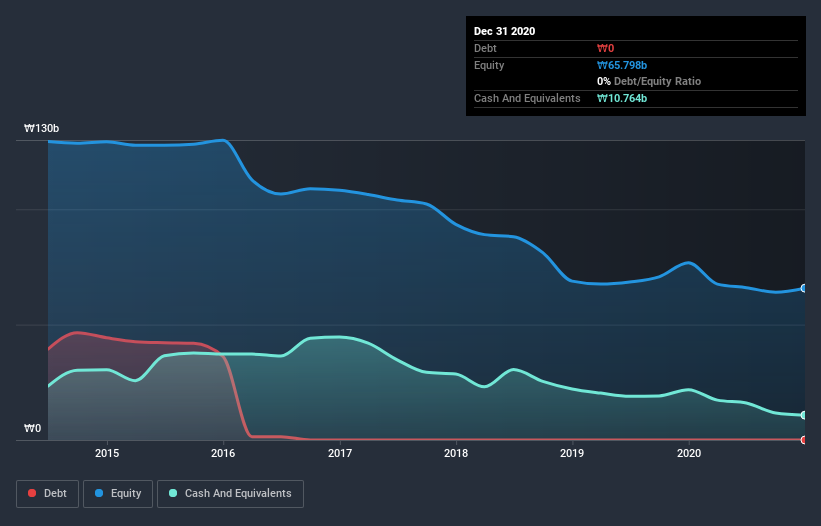- South Korea
- /
- Semiconductors
- /
- KOSDAQ:A062860
Here's Why We're Not Too Worried About TLi's (KOSDAQ:062860) Cash Burn Situation
We can readily understand why investors are attracted to unprofitable companies. For example, TLi (KOSDAQ:062860) shareholders have done very well over the last year, with the share price soaring by 141%. Nonetheless, only a fool would ignore the risk that a loss making company burns through its cash too quickly.
So notwithstanding the buoyant share price, we think it's well worth asking whether TLi's cash burn is too risky. In this report, we will consider the company's annual negative free cash flow, henceforth referring to it as the 'cash burn'. We'll start by comparing its cash burn with its cash reserves in order to calculate its cash runway.
Check out our latest analysis for TLi
Does TLi Have A Long Cash Runway?
A company's cash runway is the amount of time it would take to burn through its cash reserves at its current cash burn rate. In December 2020, TLi had ₩11b in cash, and was debt-free. In the last year, its cash burn was ₩7.7b. So it had a cash runway of approximately 17 months from December 2020. While that cash runway isn't too concerning, sensible holders would be peering into the distance, and considering what happens if the company runs out of cash. Depicted below, you can see how its cash holdings have changed over time.

Is TLi's Revenue Growing?
We're hesitant to extrapolate on the recent trend to assess its cash burn, because TLi actually had positive free cash flow last year, so operating revenue growth is probably our best bet to measure, right now. Regrettably, the company's operating revenue moved in the wrong direction over the last twelve months, declining by 13%. In reality, this article only makes a short study of the company's growth data. You can take a look at how TLi has developed its business over time by checking this visualization of its revenue and earnings history.
How Hard Would It Be For TLi To Raise More Cash For Growth?
Given its problematic fall in revenue, TLi shareholders should consider how the company could fund its growth, if it turns out it needs more cash. Issuing new shares, or taking on debt, are the most common ways for a listed company to raise more money for its business. Commonly, a business will sell new shares in itself to raise cash and drive growth. By looking at a company's cash burn relative to its market capitalisation, we gain insight on how much shareholders would be diluted if the company needed to raise enough cash to cover another year's cash burn.
Since it has a market capitalisation of ₩83b, TLi's ₩7.7b in cash burn equates to about 9.2% of its market value. Given that is a rather small percentage, it would probably be really easy for the company to fund another year's growth by issuing some new shares to investors, or even by taking out a loan.
Is TLi's Cash Burn A Worry?
Even though its falling revenue makes us a little nervous, we are compelled to mention that we thought TLi's cash burn relative to its market cap was relatively promising. Cash burning companies are always on the riskier side of things, but after considering all of the factors discussed in this short piece, we're not too worried about its rate of cash burn. On another note, TLi has 5 warning signs (and 2 which shouldn't be ignored) we think you should know about.
Of course TLi may not be the best stock to buy. So you may wish to see this free collection of companies boasting high return on equity, or this list of stocks that insiders are buying.
If you decide to trade TLi, use the lowest-cost* platform that is rated #1 Overall by Barron’s, Interactive Brokers. Trade stocks, options, futures, forex, bonds and funds on 135 markets, all from a single integrated account. Promoted
Valuation is complex, but we're here to simplify it.
Discover if TLi might be undervalued or overvalued with our detailed analysis, featuring fair value estimates, potential risks, dividends, insider trades, and its financial condition.
Access Free AnalysisThis article by Simply Wall St is general in nature. It does not constitute a recommendation to buy or sell any stock, and does not take account of your objectives, or your financial situation. We aim to bring you long-term focused analysis driven by fundamental data. Note that our analysis may not factor in the latest price-sensitive company announcements or qualitative material. Simply Wall St has no position in any stocks mentioned.
*Interactive Brokers Rated Lowest Cost Broker by StockBrokers.com Annual Online Review 2020
Have feedback on this article? Concerned about the content? Get in touch with us directly. Alternatively, email editorial-team (at) simplywallst.com.
About KOSDAQ:A062860
TLi
Engages in the designing, manufacturing, and selling semiconductor devices in Korea and internationally.
Low with weak fundamentals.
Market Insights
Community Narratives




